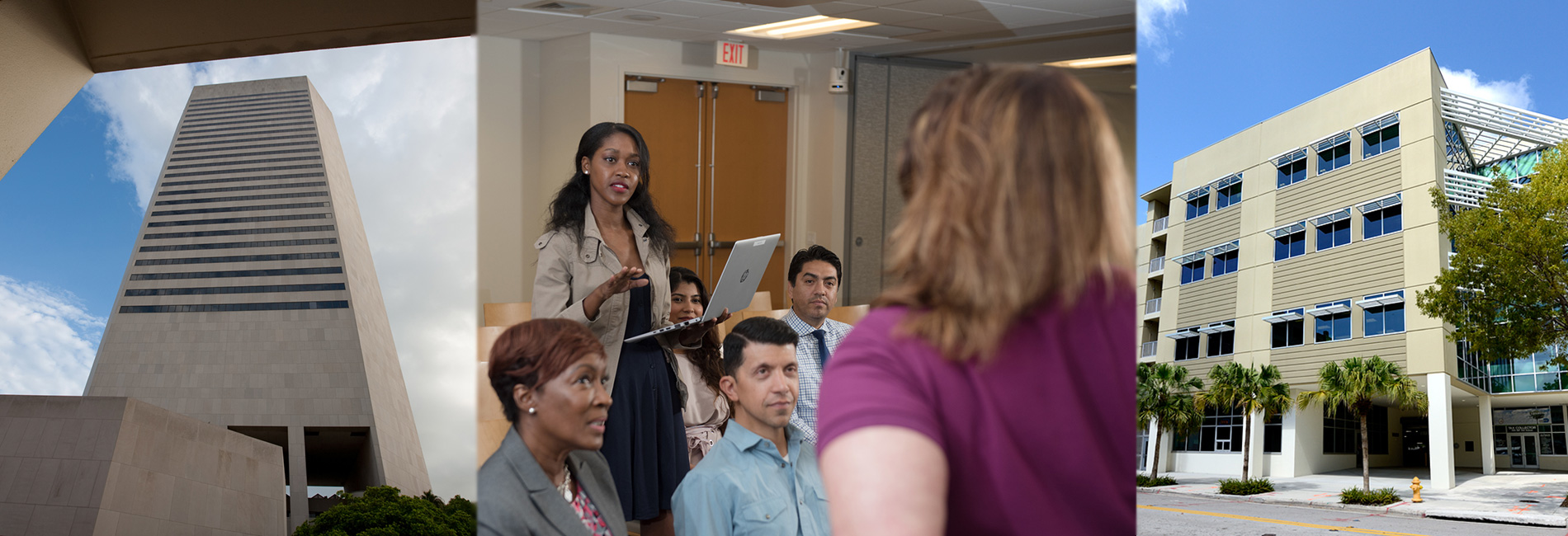Elevator Hurricane Preparedness
Check the operation of all vents and openings in the machine room and hoistway walls to ensure proper operation and prevent water leakage.
This should be a part of your regular routine maintenance to ensure that your vents operate properly to achieve designed ventilation, and that they do not permit driving rain to blow through the vents. We also want to ensure that the doors, vents and other openings are properly caulked and sealed to prevent water leakage. Fire rated metal doors that are corroded should be replaced. In addition to having lost their fire resistance, a corroded door may not possess the structural integrity necessary to withstand gale force or higher winds.
Check all sump pumps, float switches and alarms to ensure proper operation.
This process ought to be part of a regular P.M. schedule and needs no further explanation. Not every elevator pit is equipped with float switches, which are usually located in elevators where the buildings are located within a flood zone. This essential device prevents the elevator from operating and sustaining damage in the event of a pump failure and the flooding of the pit. If you are not sure if your elevator is equipped with this device, call your elevator contractor.
Check all sump pumps, float switches and alarm in elevator pits.
This is a procedure recommended in addition to your regular P.M. schedule. This should be performed when a hurricane warning has been declared. Conditions do change and equipment can fail when you need it most. During the "No-name Storm" of 2000, the County had very little flooding of pits due to failed pumps, and those were the only units damaged.
Close up all vents and openings in top of hoistway and machine room to prevent water from intruding.
While this procedure appears obvious, it should be noted that adequate ventilation for the elevator machinery is necessary. If the machine room is air-conditioned, you shouldn't have vents for the machine room, unless they're used for emergencies. If you depend on ambient ventilation (powered or passive) this should be done at the very last stages of your facility preparation, as the equipment can heat up much faster than you might think. Hoistway ventilation is not as critical and close-up can be performed early on. It is a risk for fire protection, so this should not be done semi-permanently. Put it on before a storm and take it down after the storm has passed. It is preferable to have a permanent means of preventing water from intruding this space by installing it in a manner that will still allow ventilation, such as a hood over the exterior vent grilles. It should be noted that not all hoistway vents may be readily accessible and permanent covers or hoods should be designed and installed prior to hurricane season to prevent driving rain from entry. Since hoistway vents are at the top of the shaft, they may be readily accessible from the roof of the building. If not, a cover may be installed from the inside, either by your elevator contractor or properly qualified building maintenance personnel.
Elevators that open to the atmosphere should have sandbags placed all along bottom of hoistway doors.
Since this procedure would effectively render the elevator unusable, it is recommended that this procedure be the last preparatory act, just prior to shutting the elevator off. This procedure is necessary where the elevator entrances are open to the atmosphere, such as in parking garages, housing facilities with open breezeways, pedestrian bridges and other specialized facilities such as the Metrorail stations.
Run elevator to center of hoistway and pull the main breaker in machine room (not the main breaker located elsewhere).
This should be the very last thing you do during the warning phase, just before you evacuate the building. Buildings so designated as ''hurricane safe,'' which will house some personnel, should perform this just before the winds rise above 45 MPH. We have recommended the middle of the hoistway as a compromise.
The best location is just below the top landing for most traction elevators to protect both the elevator and the counterweight equipment. Except where there is a basement, then the traction elevator should be parked two floors below the top.
Hydraulic elevators should be parked at the top floor to minimize damage to the car equipment, unless the elevator entrances are open to the atmosphere in unenclosed elevator lobbies, then the best place is the middle landing (or top for two stops) to best protect the piston.
Disconnecting the power serves three purposes:
- It prevents an unauthorized person from otherwise taking the elevator away from your intended parking area
- It prevents severe damage to equipment caused by short circuits from wet circuitry. Usually once the equipment is dried out, it can be quickly cleared and restarted by a competent mechanic with little or no damage
- The equipment will be saved from damage caused by voltage surges, spikes and dips resulting from lightning strikes and power line shorts due to wind
Park elevators with doors closed.
Although this is fairly self-explanatory, there are several reasons:
- If windows break on the floor the elevator is parked, you will prevent debris from entering the hoistway
- On hydraulic elevators, it is normal to have some oil leakage around the jack packing. An elevator that sits for 24 or more hours may settle as much as a couple of inches, or more. An open door would only invite problems
- We do not want anyone to get inside and close the doors manually and perhaps become inadvertently trapped
Do not run the elevator during hurricane.
Although this should be self-evident, we occasionally hear about people who were trapped during the storm. These are usually either due to building management not having properly secured the elevator, or building management trying to effect emergency repairs to the building.
A case in point: During Hurricane Andrew, one of our County building managers was riding the service elevator up to a floor with a load of plywood to secure some broken windows in one of our high-rise facilities. Even though this was in the downtown Miami area, we had significant high winds. The wind force coming down the elevator shaft was so strong that it stalled the elevator motor and blew a circuit breaker. Had the elevator not been near a floor where the trapped persons could have extricated themselves they would have been trapped, at a minimum of 12 hours. It could have been longer, as we were unable to get service personnel to commence repairs until 3 p.m., a full 18 hours after the incident.
After HurricaneInspect elevator pit, cab and machine room for indication of water. (Do not energize main line breaker if water is found).
If water is found, call your elevator contractor.
We do not want you to energize the main line power until it can be determined whether or not the water poses a hazard to life or equipment. This is an instance in which good judgment is necessary on the part of building management. If there is any doubt, contact your elevator contractor.
Generally, if the water encountered in the pit is minimal and is not near any equipment in the pit, the elevator may be run. If water leaked under the door or through a vent in the elevator machine room, and there is no water on the equipment or signs of water having been on the equipment, then it may be safe to run the elevator. If water is in the cab and it did not leak in from above, the elevator may be run. If water conditions appear above the cab or on any part of the equipment do not run it until it can be properly evaluated.
Those buildings with basements need to take special precautions. Do not run the elevator until you have checked the basement.
A case in point: A couple of police officers in Coral Gables almost lost their lives when they got in an elevator at the ground floor to go up in a building on an emergency call. The electrical system shorted out, and called the elevator automatically to the basement, where the doors automatically opened, flooding the car. Luckily, they were able to swim to safety. Emergency personnel in New York were not so lucky. Drowning in an elevator happens all over the world, and the victims are helpless once the elevator has hit the water.
Do not attempt to start elevator (or call for service) if power is out.
If you don't have electricity, you don't want to call your elevator contractor while you are without power. If your building has a generator and the elevators (or some of them) are not connected to the generator, you don't want to call until the generator shuts off and all normal power is restored.
The important point here is all normal power; there may be a condition where some lights are on in the building, and some are not. This may be caused by the loss of one or more phases, or "legs", of three-phase power. Without all three phases in our commercial buildings, the elevators will not run. Some elevators may not be equipped with a phase or voltage monitor and trying to start it will result in damage to the equipment, which would not be covered by our maintenance agreements. Likewise, if you call for service and there is no power, you will pay extra for the trouble call.
Special ConsiderationsUsage of equipment and availability of equipment for people, including people with disabilities, who are unable to climb stairs.
One must take into account the effect that unavailability of elevators, both before the storm and after, will have on people who cannot climb stairs. Building occupants should be notified in advance regarding the policy to shut down the elevators prior to the storm and, if feasible, should be notified again when the actual time that the elevator will be shut down has been established.
The ADA requires reasonable accommodation for people with disabilities. That might include giving people who cannot climb stairs the opportunity to register with building management to ensure that they are notified before the elevators are shut down. Reasonable accommodation might include making tenants with disabilities aware that they can get information about County shelters, including special needs shelters, by calling 311 or 305-468-5900.
Reasonable accommodation might include letting tenants know when they would need to plan to leave the building to be sure that they would have elevator service to the ground floor in order to get to an appropriate designated shelter. It would be important to know that elevators were not shut down before shelters were opened. Reasonable accommodation might include ensuring that shelters on lower floors in your building that may be provided generally for tenants are accessible for people with disabilities who choose not to leave the building.
Reasonable accommodation would not include operating the elevator at a time when it is not safe to do so. Determining when to shut down elevator equipment before the storm is a judgment call that must balance the needs of people who cannot climb stairs with the need for safety and the need to preserve the equipment so that it will be available after the storm. It is not safe to use an elevator during a hurricane, and such use should not be allowed for anyone. See the case stories above. After the storm, elevator service should be restored as quickly as it can be safely accomplished.

People and Internal Operations
Raymond Hall
Stephen P. Clark Center
111 NW 1st Street,
Suite 2401
Miami, FL 33128
305-375-5893

